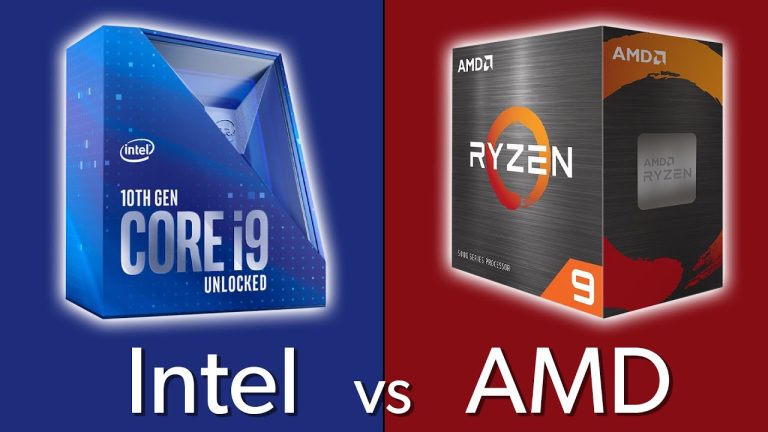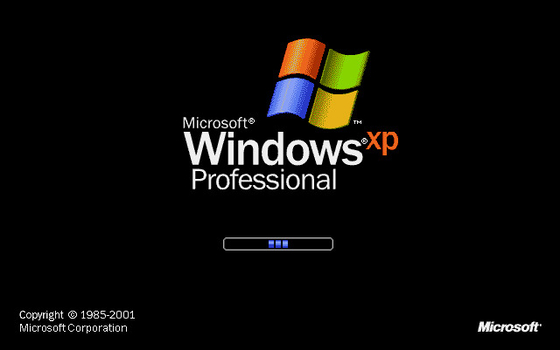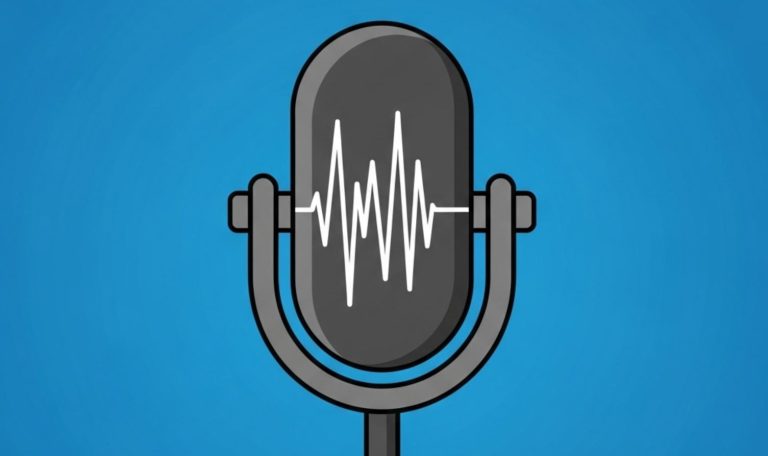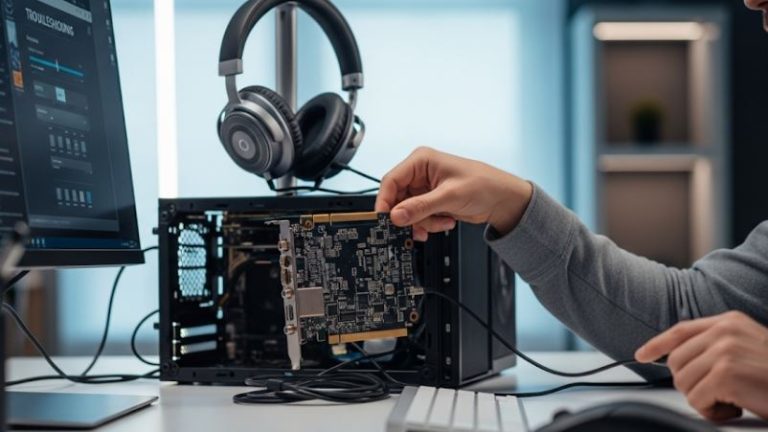
The MATE desktop environment, cherished for its traditional desktop experience and efficient resource usage, is a popular choice for many Debian users. Debian 12 „Bookworm,” the latest stable release, generally offers a robust platform for MATE. However, users can sometimes encounter frustrating situations where the MATE desktop environment fails to load correctly after login, leaving them with a blank screen, a cursor on a black background, or being kicked back to the login manager. This article delves deep into the potential culprits behind these loading issues on Debian 12 Stable, offering detailed troubleshooting steps and explanations.
The transition from a login screen to a fully functional desktop involves a complex interplay of components, including the display manager, the X server (or Wayland compositor, though MATE primarily uses Xorg), graphics drivers, MATE session components, and user configurations. A hiccup in any of these areas can prevent the MATE desktop from appearing as expected.
⚙️ The Role of the Display Manager (DM)
The Display Manager (DM) is responsible for handling graphical logins and launching your chosen desktop environment. Debian allows for several DMs, with LightDM being a common and recommended choice for MATE. Issues with the DM are a frequent source of desktop loading failures.
Common Display Manager Problems:
- Misconfiguration: The DM might not be correctly configured to start the MATE session.
- Service Failure: The DM service itself might fail to start or crash.
- Conflicts: Having multiple DMs installed without a clear default can sometimes lead to issues.
🔍 Diagnosing Display Manager Issues:
-
Identify your Display Manager: If you’re unsure which DM is active, you can often find it by checking the default:
💻 cat /etc/X11/default-display-managerThis will usually show something like
/usr/sbin/lightdmor/usr/sbin/gdm3. -
Check the DM Service Status: Use
systemctlto check if the DM service is running and if there are any immediate errors. Replacelightdm.servicewith your DM’s service name (e.g.,gdm3.service,sddm.service).💻 sudo systemctl status lightdm.serviceLook for lines indicating „active (running)” or any error messages. If it’s not active, try starting it:
💻 sudo systemctl start lightdm.service -
Examine DM Log Files: Display managers keep detailed logs that can pinpoint problems.
- For LightDM: Check the files in
/var/log/lightdm/. Key files arelightdm.logand theseat0-greeter.log. - For GDM3: Logs are typically managed by
journalctl. You can view GDM3 logs using:💻 sudo journalctl -u gdm3.service - For SDDM: Logs are often in
/var/log/sddm.logor accessible viajournalctl.
Look for error messages (often marked with „EE” or „ERROR”) around the time of the failed login attempt.
- For LightDM: Check the files in
💡 Solutions for Display Manager Problems:
-
Reconfigure the Display Manager: If you suspect a configuration issue, you can try reconfiguring the DM. For LightDM, this is done via:
💻 sudo dpkg-reconfigure lightdmThis command will prompt you to choose the default display manager if multiple are installed. Ensure LightDM (or your preferred DM for MATE) is selected.
-
Reinstall the Display Manager: A more drastic step is to reinstall the DM:
💻 sudo apt update 💻 sudo apt remove lightdm # Or your specific DM 💻 sudo apt install lightdm mate-desktop-environment # Ensure MATE is also selected 💻 sudo systemctl restart lightdm.serviceMake sure to install
mate-desktop-environmentormate-corealong with it to ensure all necessary MATE components and session files are present. -
Switch to a Different Display Manager: If one DM is consistently problematic, you could try installing and switching to another (e.g., from LightDM to GDM3, or vice-versa, though GDM3 pulls in more GNOME dependencies).
💻 sudo apt install gdm3 💻 sudo dpkg-reconfigure gdm3 # Select GDM3 as default 💻 sudo systemctl disable lightdm.service 💻 sudo systemctl enable gdm3.service 💻 sudo reboot
🖥️ Graphics Driver Complications
Graphics drivers are critical for rendering the desktop. Incorrect, missing, buggy, or conflicting graphics drivers are a very common reason MATE (or any desktop environment) might fail to load. Debian 12 aims to provide good out-of-the-box support, but certain hardware, especially newer NVIDIA or AMD GPUs, can sometimes pose challenges.
Understanding Graphics Driver Issues:
- Incorrect Driver: The system might be trying to use a generic driver (like
vesaorfbdev) that lacks the capabilities to run a full desktop environment, or the wrong specific driver. - Missing Firmware: Modern open-source drivers (especially for AMD and Intel) often require firmware blobs, which are in the
firmware-linux-nonfreeorfirmware-amd-graphicspackages (often in thenon-free-firmwaresection of Debian repositories). - Proprietary vs. Open Source: For NVIDIA cards, users choose between the open-source
nouveaudriver (which has limitations) and NVIDIA’s proprietary drivers. Installation issues or kernel module incompatibilities with proprietary drivers can break the graphical environment. - Xorg Misconfiguration: The Xorg server might be misconfigured regarding the graphics driver.
🔍 Diagnosing Graphics Driver Issues:
-
Identify Your Graphics Card and Driver: Use
lspcito find your graphics card and the kernel driver in use:💻 lspci -k | grep -EA3 'VGA|3D|Display'This command will list your VGA compatible controller and show the „Kernel driver in use” and „Kernel modules” associated with it. For Intel, you’d expect
i915. For AMD,amdgpu. For NVIDIA,nouveauornvidia. -
Check Xorg Logs: The Xorg server log is invaluable for graphics-related problems. It’s typically located at
/var/log/Xorg.0.log. If you were trying to log in and got kicked back, check this log immediately. If using a DM like GDM3 that might start Wayland sessions by default (though MATE uses Xorg), the relevant Xorg log might be in~/.local/share/xorg/Xorg.0.logfor user sessions, or a different path depending on the DM. Open the log and search for errors:💻 less /var/log/Xorg.0.logLook for lines starting with
(EE)for errors or(WW)for warnings. Common errors include:No screens foundFailed to load module "nvidia"(or other driver modules)Device not found- Errors related to
modesettingor specific driver names.
-
Check Kernel Messages for Firmware Issues:
💻 dmesg | grep -i "firmware" 💻 dmesg | grep -i -e error -e fail -e warningLook for messages indicating that firmware files failed to load, especially for
amdgpu,i915, ornouveau.
💡 Solutions for Graphics Driver Problems:
-
Ensure
non-freeandnon-free-firmwareRepositories are Enabled: Many proprietary drivers and essential firmware reside in these repositories. Edit/etc/apt/sources.listand ensure your lines for Debian Bookworm includemain contrib non-free non-free-firmware. Example line:deb http://deb.debian.org/debian/ bookworm main contrib non-free non-free-firmwareThen runsudo apt update. -
Install Correct Firmware: If firmware is missing:
💻 sudo apt install firmware-linux-nonfree firmware-misc-nonfree # For AMD GPUs 💻 sudo apt install firmware-amd-graphics # For Intel GPUs (usually covered by firmware-linux-nonfree or integrated)Reboot after installing firmware.
-
For NVIDIA Users:
- Proprietary Drivers: The recommended way to install NVIDIA proprietary drivers on Debian 12 is often through the
non-freerepository:💻 sudo apt install nvidia-driver firmware-nvidia-gsp # Adjust package name based on card generation if neededYou might also need
nvidia-settingsand potentiallynvidia-xconfig(though runningnvidia-xconfigis often not necessary and can sometimes cause issues if not done correctly). A reboot is required. More information can be found on the Debian Wiki for NVIDIA Graphic Cards. - Nouveau: If you were using proprietary drivers and they broke, you might try reverting to Nouveau (though this might involve blacklisting NVIDIA modules and ensuring Nouveau is not blacklisted).
- Proprietary Drivers: The recommended way to install NVIDIA proprietary drivers on Debian 12 is often through the
-
For AMD/Intel Users: Ensure the Mesa drivers are fully installed:
💻 sudo apt install libgl1-mesa-dri mesa-vulkan-drivers xserver-xorg-video-amdgpu # For AMD 💻 sudo apt install libgl1-mesa-dri mesa-vulkan-drivers xserver-xorg-video-intel # For IntelThese are usually pulled in by default, but a reinstallation can sometimes help.
-
Reconfigure Xorg (Use with Caution): In rare cases, a manual Xorg configuration might be needed or an existing one might be problematic. You can try removing custom Xorg configuration files from
/etc/X11/xorg.confor/etc/X11/xorg.conf.d/(back them up first!). Debian generally does well with auto-configuration.💻 sudo mv /etc/X11/xorg.conf /etc/X11/xorg.conf.backup 💻 sudo mv /etc/X11/xorg.conf.d/20-nvidia.conf /etc/X11/xorg.conf.d/20-nvidia.conf.backup # Example
MATE Desktop Configuration and Session Files
Problems can also stem from corrupted configuration files within your user’s home directory related to MATE itself or its session management.
Understanding MATE Configuration Issues:
- Corrupted User Settings: Customizations or a glitch could corrupt files MATE relies on to start its components (panel, window manager, etc.).
- Session Startup Errors: Scripts or applications set to autostart within the MATE session might crash and bring down the whole loading process.
🔍 Diagnosing MATE Configuration/Session Issues:
-
Check
~/.xsession-errors(or~/.xsession-errors.old): This is one of the most crucial log files for diagnosing user-specific desktop loading problems. It contains output and errors from applications and scripts run when your X session starts.💻 cat ~/.xsession-errorsLook for any error messages, especially those related to MATE components like
marco(window manager),mate-panel,caja(file manager), ormate-session. -
Test with a New User Account: This is a definitive way to check if the problem is system-wide or specific to your user profile.
💻 sudo adduser testuserLog out, then try to log in as
testuser. If MATE loads correctly fortestuser, the problem lies within your original user’s home directory configuration.
💡 Solutions for MATE Configuration/Session Problems:
-
Reset MATE Component Configurations (Backup First!): If the new user test indicates a problem with your user profile, you can try resetting MATE configurations. Always back up these directories before renaming or deleting them. Log out of MATE and log into a TTY (Ctrl+Alt+F3). Log in with your username and password. Then:
💻 mv ~/.config/mate ~/.config/mate-backup 💻 mv ~/.config/mate-session ~/.config/mate-session-backup 💻 mv ~/.config/marco ~/.config/marco-backup 💻 mv ~/.cache/mate ~/.cache/mate-backup 💻 mv ~/.local/share/mate ~/.local/share/mate-backupYou might not have all these directories. After renaming them, try logging back into MATE graphically (Ctrl+Alt+F1 or Ctrl+Alt+F7, depending on your setup). MATE will recreate these with default settings. If this works, you can selectively restore configurations from your backups or reconfigure manually.
-
Check MATE Autostart Applications: A faulty autostart application could be the culprit. Look in:
~/.config/autostart//etc/xdg/autostart/Try temporarily moving files out of~/.config/autostart/to see if it helps.
-
Using
dconffor MATE Settings: MATE usesdconffor many settings. If very specific settings are corrupted, you might need to use thedconf-editor(graphical tool, if you can get a minimal session or another desktop running) or thedconfcommand-line tool. Resetting a whole branch of MATE settings (use with extreme caution):# From a TTY, or if you can get a terminal in a failing session 💻 dconf reset -f /org/mate/This is quite aggressive and will reset all MATE settings stored in dconf to their defaults.
📦 Package Management and Dependency Problems
An incomplete upgrade, broken packages, or missing dependencies vital for MATE can certainly prevent it from loading.
Understanding Package Issues:
- Broken Packages: An interruption during an
apt upgradeorapt installcan leave packages in a broken state. - Missing Dependencies: Key libraries or components that MATE relies on might be missing or be the wrong version.
- Incomplete MATE Installation: Not all necessary MATE metapackages or components might be installed.
🔍 Diagnosing Package Issues:
-
Check for Broken Packages:
💻 sudo apt --fix-broken install 💻 sudo dpkg --configure -aThese commands attempt to fix any interrupted installations or unmet dependencies.
-
Ensure MATE Metapackages are Installed: The main metapackage for a full MATE desktop is
mate-desktop-environment. For a more minimal setup,mate-coreis an option.💻 sudo apt install mate-desktop-environmentThis will pull in all standard MATE components. Check
apt policy mate-desktop-environmentto see if it’s installed. -
Review
aptHistory: Check/var/log/apt/history.logto see recent package changes that might correlate with when the problem started.
💡 Solutions for Package Problems:
-
Force Reinstall MATE Packages: If you suspect corruption in MATE packages themselves:
💻 sudo apt update 💻 sudo apt reinstall mate-desktop-environment marco mate-panel caja mate-session-manager mate-settings-daemon # Add other key MATE packages if needed -
Full System Upgrade: Ensure your system is fully up-to-date:
💻 sudo apt update 💻 sudo apt full-upgradeA
full-upgradecan resolve complex dependency issues by allowing packages to be removed if necessary to complete the upgrade.
Systemd and Service Dependencies
The systemd init system manages services crucial for system operation, including those needed for the graphical environment.
Understanding systemd Issues:
- Failed Critical Services: Services like
dbus.serviceor those related to user session management failing can impact desktop loading. - Target Unit Problems: The system might not be reaching the
graphical.targetcorrectly.
🔍 Diagnosing systemd Issues:
-
Check Overall System Health:
💻 systemctl --failedThis lists any services that have failed to start.
-
Examine
journalctlLogs:journalctlprovides access to system logs and can be very revealing.- For general errors from the current boot:
💻 sudo journalctl -xb -p err - To follow logs in real-time (useful while trying to log in from another TTY):
💻 sudo journalctl -f
Look for errors related to your display manager,
systemd-logind,dbus, or other system components around the time of the login attempt. A good guide to usingjournalctlcan be very helpful. - For general errors from the current boot:
💡 Solutions for systemd Issues:
- Address Failed Services: If
systemctl --failedshows specific failed services, investigate them individually usingsystemctl status <service-name>andjournalctl -u <service-name>. - Ensure Graphical Target: Check if the default target is graphical:
💻 systemctl get-defaultIt should be
graphical.target. If not, set it:💻 sudo systemctl set-default graphical.target
💾 File System and Permission Problems
While less common for intermittent loading issues, underlying file system corruption or incorrect permissions can cause widespread problems.
Understanding File System/Permission Issues:
- File System Corruption: Errors on the partition where your home directory or system files reside can prevent files from being read correctly.
- Incorrect Permissions: MATE components might not have the necessary permissions to access their configuration files or execute properly, especially within your home directory.
🔍 Diagnosing File System/Permission Issues:
-
Check Home Directory Permissions: Permissions on your home directory and key configuration files are critical. From a TTY:
💻 ls -ld ~ ~/.config ~/.cache ~/.localYour home directory (
~) should be owned by your user and group. Dotfiles and directories like.configshould also be owned by you. -
Run a File System Check (
fsck): This should be done from a live environment or recovery mode, as the partition needs to be unmounted. Boot from a Debian live USB/DVD. Identify your root and home partitions (e.g., usinglsblkorfdisk -l). Then runfsckon the unmounted partition (e.g.,/dev/sdaX):💻 sudo fsck /dev/sdaXAnswer ‘yes’ to fix errors if prompted, but be aware this can have risks if the disk is severely damaged.
💡 Solutions for File System/Permission Problems:
-
Correct Home Directory Permissions: If permissions are wrong, you can try to fix them (use with caution):
# From a TTY, logged in as your user 💻 sudo chown -R $(whoami):$(whoami) /home/$(whoami)/ 💻 chmod -R u+rwX /home/$(whoami)/ # Specifically ensure key dotfiles are writable 💻 chmod u+w ~/.xsession-errors ~/.ICEauthority ~/.Xauthority -
Repair File System (via
fsck): As described above.
📜 .xsession-errors and Other Logs: Your Best Friends
Repeatedly, the importance of log files has been mentioned. For desktop session startup problems, ~/.xsession-errors is paramount for user-specific issues. For system-level problems, especially those before the user session even tries to start (like DM failures or Xorg server not starting), /var/log/Xorg.0.log and journalctl are key.
~/.xsession-errors: Check this first if you get past the login screen but before the desktop fully loads. It will contain errors from MATE components and any autostarted applications./var/log/Xorg.0.log: Crucial for graphics driver issues and X server startup failures.journalctl: For system service issues, including the Display Manager.journalctl -xecan give a snippet of recent important logs.
A Systematic Troubleshooting Approach 💡
When faced with MATE not loading:
- Don’t Panic.
- Try switching to a TTY (Ctrl+Alt+F1 through F6). If you can log in there, the core system is likely running.
- Check Logs First: Start with
~/.xsession-errors(if it exists and is recent). Then check/var/log/Xorg.0.log. Then usejournalctlfor broader system issues or DM-specific logs. - Test with a New User: This quickly isolates user-specific configuration problems.
- Consider Recent Changes: Did this start after an update? Installing new software (especially graphics drivers)? A power outage?
- Simplify: If you suspect graphics drivers, can you boot with a
nomodesetkernel parameter temporarily (this will likely give you low resolution but might bypass driver issues to get to a TTY or basic desktop)? - Be Methodical: Change one thing at a time and test.
The MATE desktop environment is generally stable and reliable on Debian. When loading issues occur, they are often traceable to configurations, drivers, or package states. By systematically exploring these potential causes, users can often diagnose and resolve the problem, returning to their productive and familiar MATE desktop. For more information on MATE itself, visit the MATE Desktop official website. For general Debian display manager information, the Debian Wiki on Display Managers can be a useful resource.














